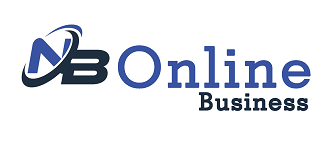Commercial printing is the most commonly utilized form of printing for major projects. This may be seen everywhere, from books and periodicals to billboards and commercial packaging. Commercial printers have greater resources, experience, and access to more expensive printing equipment than do-it-yourselfers. As a result, the quality of printed products generated by commercial printers is often higher than that of home printers. On the other hand, commercial printing may be more expensive, so examine the advantages and disadvantages before selecting.
Printer Models
When designing a commercial print run, there are various options to consider. Inkjet printers dominate the business printing industry. To print text and graphics, inkjet printers employ minute droplets of ink. They are a popular alternative for start-ups and home offices since they are frequently less expensive and easier to use than their competitors. Their output quality varies widely, in addition to being slower than other types of commercial printers. Another alternative is to use a laser printer. A laser printer’s concentrated light beam transfers pictures to paper. Compared to inkjet printers, their output is quicker and of superior quality. They have the drawback of being more expensive to maintain. Finally, the type of commercial printer that is suitable for your business will be chosen by your unique demands and financial limits.
Contingencies Both Favorable And Unfavorable
Commercial inkjet printers have increased in popularity in recent years as a result of the various benefits they provide over traditional printing techniques. However, there are some drawbacks to utilizing inkjet printers. There are a few things to keep in mind while utilizing these printers for business reasons. The cost of ink has a big influence. Laser printers use less ink than inkjet printers. As a result, if a corporation uses supplies for a project, they may evaporate soon. It is also vital to consider ink prices when selecting a printer. Print quality should also be evaluated. Despite substantial advancements, commercial inkjet printers still fall short of laser printers in terms of precision and fine detail.
This is an important consideration when selecting a printer for business use. Finally, certain commercial inkjet printers may require special paper for optimal performance. When estimating how much money you’ll need for your project, remember that this paper is more expensive than regular printer paper.
However, there are some advantages to utilizing an inkjet printer. Every commercial printing process necessitates the use of a trained printer. Because of their durability and fast print rates, inkjet printers are widely used in the commercial printing sector.
One of the most significant advantages of inkjet printers is their ability to print on various paper sizes and kinds. This adaptability is essential for businesses that print a wide range of documents, such as labels, brochures, and catalogs. Inkjet printers are well-known for their productivity and quickness. They can create a huge number of copies quickly without losing quality. As a consequence, they are perfect for companies with time-sensitive needs.
Standard Commercial Printer Parts
The input tray, print engine, controller, and output tray are the four primary components of every commercial printer. The controller communicates with the printer engine and supervises the printing process, serving as the operation’s neural network. The print engine is the printer component that moves ink from the ink reservoir to the paper. Among its numerous moving pieces are rollers that transport ink from the printer’s ink reservoir to the paper.
When you insert the paper into the input tray, it is routed to the print engine, and the printed sheets are deposited in the output tray. Optional features for commercial printers include a hole puncher and a stapler. A commercial printer is, at its heart, a basic piece of machinery capable of generating high-quality printed items fast and effectively.
So, What Exactly is a Commercial Printer’s Role?
The scope and depth of the commercial printing sector are astounding. Commercial printers come in a variety of sizes, from modest desktop machines to massive industrial-scale printing presses. However, certain components are common to all commercial printing machines. The printing machinery includes a print head, ink supply, and medium feed. The print head of a printer is the component that deposits ink onto the material being printed on. The printer’s ink supply system delivers ink to the print head, while the media feeding mechanism feeds paper or other media into the printer. These three components are the foundation of any commercial printing enterprise. Commercial printing equipment prints text and pictures on various paper kinds and sizes.
Thermographic Printing Systems
Commercial printers may print text and images on paper, card stock, or other materials. The thermography printer is one of several commercial printers kinds. To operate, it uses heat to emboss patterns on paper. To make pictures, the powdered substance is first put on the paper. The powder sticks to the print surfaces of choice. Following that, the paper is put through a heated chamber. A raised picture is created when heated powder melts and rises. After inserting the photo, the paper cools. Invitations, business cards, and other printed materials that require a high-quality finish often benefit from thermography printing.
Though not many provide this service, TEAM Concept Printing is one of the trade printing companies that can assist you with thermography. Many of their thermography services are used to create outstanding letterheads and business cards that impress the customers’ colleagues and workers.
TEAM Concept Printing can also assist with post-press printing, digital coloring, and a variety of other services. They can handle whatever you throw at them.
Printing History for Profit
Commercial printing is not a novel idea. Indeed, commercial printing did not begin until the 15th century, with the invention of the printing press by Johannes Gutenberg. Businesses have long used commercial printers to produce books, magazines, and other printed materials. New printing methods, such as lithography and rotary printing, arose in the early nineteenth century. As a result of the broad use of these improvements in the later decades of the nineteenth century, commercial printing prospered.
The commercial printing industry is still important in today’s economy. Product packaging and promotional materials are only two of the numerous printed things commercial printers produce. Because of the introduction of digital printing, commercial printers can now produce high-quality prints at the lowest possible cost. Commercial printers can assist you if you need billboard ads or business cards.
Click here to read more about what companies like Team Concept Printing can do for you. After using TEAM’s services for the first time, you will undoubtedly return for any future bespoke printing needs.



